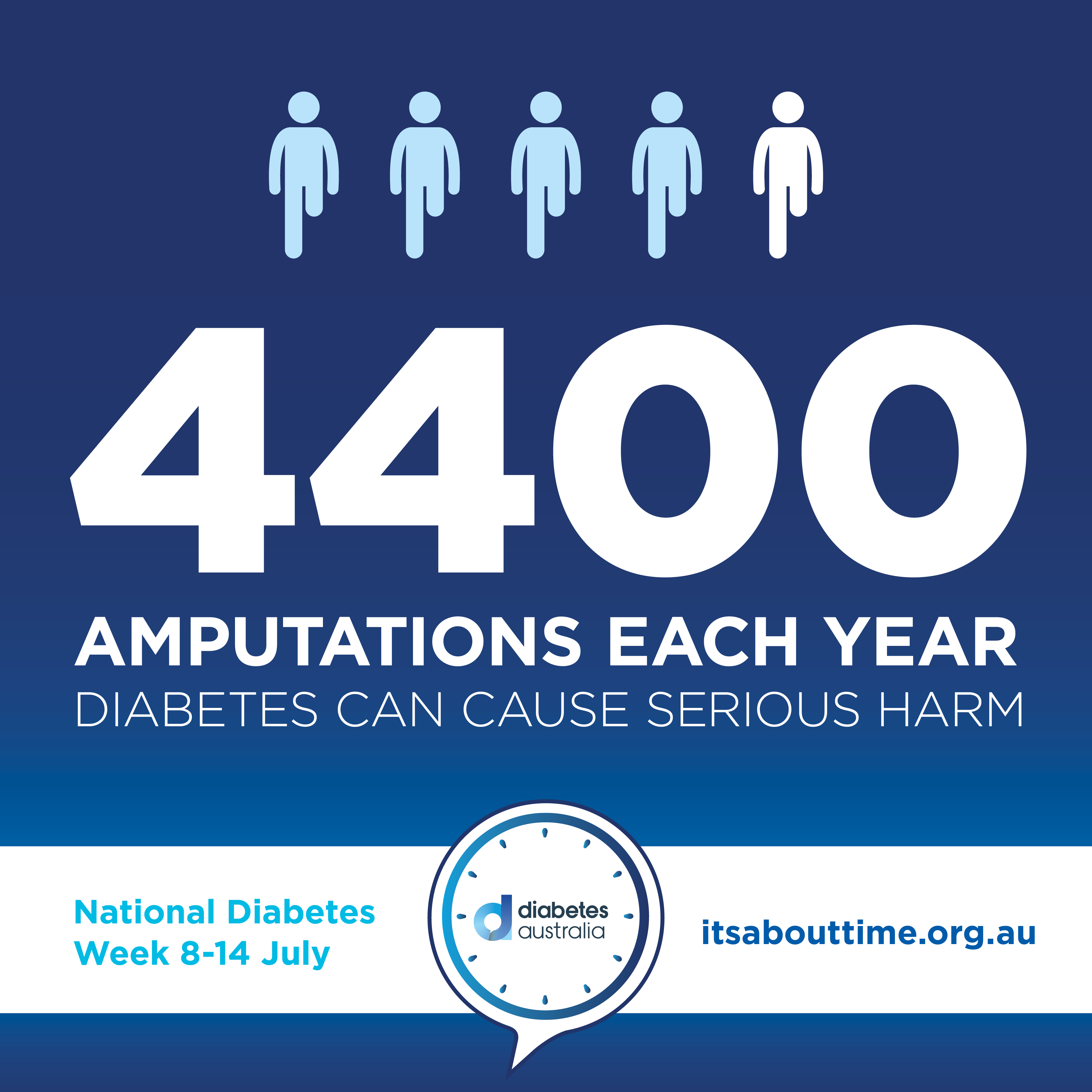Its about time for……
National Diabetes Week – July 8th-14th
Diabetes is the fastest growing chronic condition in Australia and 1.2 million Australians have already been diagnosed. That equates to 5% of the population which may not sound like a lot but it is estimated that for every diagnosed person there is another out there who remains undiagnosed. If you add in the people with pre-diabetes the figure rises to 3.7 million.
But what does it mean for your feet?
Diabetes affects the circulation and sensation in your feet and lower limbs. Increased blood glucose (sugar) levels can cause blockages in your arteries and damage the nerves. The longer the levels remain elevated the greater the damage that can occur. Eventually this could lead to amputations and other serious complications. The longer you have diabetes along with lifestyle factors such as smoking, excessive alcohol consumption and inactivity can all contribute to diabetic complications. Education and daily care can prevent these complications from arising though.
• Knowing your feet is important – here are things you should do daily –
Check your feet looking for changes to the skin or foot such as cuts, bruises, swellings, redness, change in shape, ulcers, ingrown toenails, blisters
Wash your feet and dry them carefully
Moisturise your feet but avoid cream in between the toes
Wear a clean pair of socks – not too tight or with seams that could irritate though
Check shoes for damage or anything inside them
• If you can’t reach your feet or have poor vision then seek assistance from a family member or friend to do your daily foot checks
• If you find a cut, blister, or sore then wash the area as soon as possible, apply an antiseptic and cover with a basic dressing
• You should seek attention from your GP, Nurse or Podiatrist if you notice anything unusual or are concerned
• Toenails should be cut or filed following the shape of the toe with the edges rounded to prevent sharp edges. Never cut or ‘dig’ down the sides.
• Filing the nails once a week is a much safer option than attempting to cut them yourself
• Appointments with a podiatrist should occur annually at a minimum, but often more frequent appointments are advised depending upon your risk level
What happens when I see the podiatrist?
• A diabetic foot assessment includes –
Testing of the vascular and neurological systems – sometimes problems can exist without you realising
Visual and manual examination of the feet and lower limbs
Footwear assessment
A full report is sent back to your GP (and other allied health providers if necessary)
What do I do now?
Do you think you or someone close to you, may have diabetes? If so, it’s time to get checked out. Make an appointment with your GP who can then make referrals to appropriate health professionals to complete your care.
If you’ve already been diagnosed but haven’t seen a podiatrist yet or it’s been a while since your last appointment then book in at The Woodvale Podiatrist today for your foot check. We accept Medicare Care Plans (EPC or chronic disease management plan) or you can be seen privately, claiming with private health insurance if applicable.
Any questions please call on (08) 9409 6060 or email info@thewoodvalepodiatrist.com.au


Recent Comments